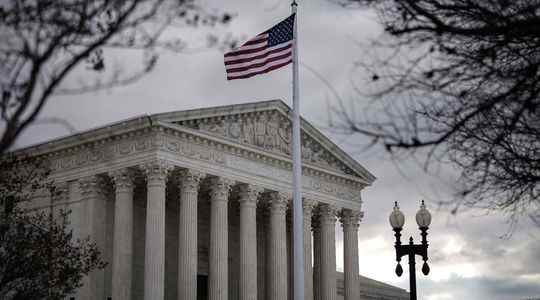While the United States Supreme Court ruled in 2007 that, in the context of the fight against global warming, the Environmental Protection Agency was competent to regulate greenhouse gas emissions emitted by the factories of the country, it has, Thursday, June 30, made the decision to drastically reduce its power. It must be said that the composition of the Supreme Court has since changed, and now with a conservative majority, it gives the impression of applying a republican program. After consecrating the carrying of weapons outside the home and prohibiting abortion at the federal level, it therefore limits the field of competence of an agency on which President Joe Biden intended to rely so that the United States produces, in 2035, the majority of their electricity thanks to clean energies and achieve, by 2050, carbon neutrality on the horizon.
While judging “sense” the policy of capping carbon dioxide emissions eventually forcing the exit from coal for electricity production, the Supreme Court considers that the EPA has no legitimacy to exercise power given to him: “It is implausible that Congress would have given the EPA the authority to enact such a regulatory scheme on its own…A decision of such magnitude and with such consequences rests with Congress itself, or an agency acting under clear delegation,” the report said. In this case, as in the case of abortion, this power now falls to the States, leaving the threat of a country fractured by contrary decisions, making any coordinated political action impossible.
The most polluting States could, in fact, dispense with any regulations limiting their CO2 emissions. It was 19 of them, all conservatives and led by West Virginia, who asked the Supreme Court to clarify the exact role of the environmental protection agency. During his presidency, Donald Trump had already tried to limit the scope of intervention of this entity created in 1970. But a federal court had defeated his “coal plan”, which precisely left great freedom of decision to the States. By tilting the Supreme Court on the Republican side, Trump has prepared the future of his idea, and this Thursday’s decision appears to be his consecration.
The still vain efforts of the Democratic camp against global warming
Joe Biden has however shown, from the first day of his election, a great determination to put his country, the second largest producer of CO2 in the world, back on the path to reason. He rejoined the Paris Climate Agreement, stated his desire for carbon neutrality and proposed a social and ecological plan, the “Build Back Better”, rejected by the Senate due to the opposition of an elected official… democrat. The government’s efforts to present “nationally determined contributions”, to use the terminology of the Paris Agreement, are therefore not paying off. And like Barack Obama with his 2015 “Clean Power Plan”, repealed by Donald Trump, a new Democratic presidency could be synonymous with inaction. While the average utilization rate of American coal plants had fallen to 40% in 2020, it has risen, as a warning, to 51% in 2021.
The Supreme Court’s decision sparked outrage from the Democratic political class, environmental organizations and the international community. All are well aware that the last chance to limit global warming to 2°C by 2100 was perhaps passing. “Our planet is on fire and this extremist Supreme Court is destroying the ability of the federal government to fight back,” Senator Elizabeth Warren lamented, seeing, like the president of the Center for Climate and Energy Solutions, Nathaniel Keohane, “the threat to see the United States relegated far behind those who are accelerating to fulfill their commitments”.
The UN, through its Secretary General Antonio Guterres, for its part, considered that it was “a setback”, while the States are already “very behind in achieving the objectives of the Paris agreement.” This Thursday, it’s a bit as if the United States had just left it a second time.
